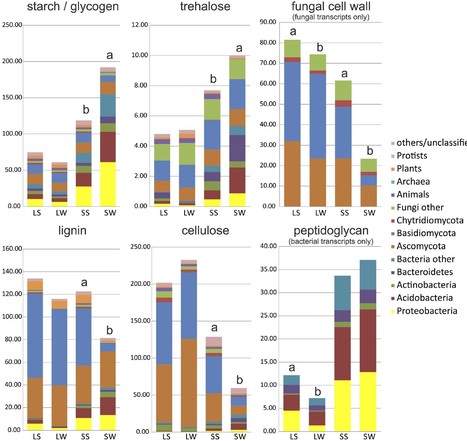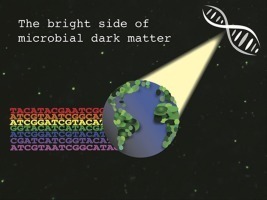Evergreen coniferous forests contain high stocks of organic matter. Significant carbon transformations occur in litter and soil of these ecosystems, making them important for the global carbon cycle. Due to seasonal allocation of photosynthates to roots, carbon availability changes seasonally in the topsoil. The aim of this paper was to describe the seasonal differences in C source utilization and the involvement of various members of soil microbiome in this process. Here, we show that microorganisms in topsoil encode a diverse set of carbohydrate-active enzymes, including glycoside hydrolases and auxiliary enzymes. While the transcription of genes encoding enzymes degrading reserve compounds, such as starch or trehalose, was high in soil in winter, summer was characterized by high transcription of ligninolytic and cellulolytic enzymes produced mainly by fungi. Fungi strongly dominated the transcription in litter and an equal contribution of bacteria and fungi was found in soil. The turnover of fungal biomass appeared to be faster in summer than in winter, due to high activity of enzymes targeting its degradation, indicating fast growth in both litter and soil. In each enzyme family, hundreds to thousands of genes were typically transcribed simultaneously. Seasonal differences in the transcription of glycoside hydrolases and auxiliary enzyme genes are more pronounced in soil than in litter. Our results suggest that mainly fungi are involved in decomposition of recalcitrant biopolymers in summer, while bacteria replace them in this role in winter. Transcripts of genes encoding enzymes targeting plant biomass biopolymers, reserve compounds and fungal cell walls were especially abundant in the coniferous forest topsoil.
Via Petr Baldrian



 Your new post is loading...
Your new post is loading...








